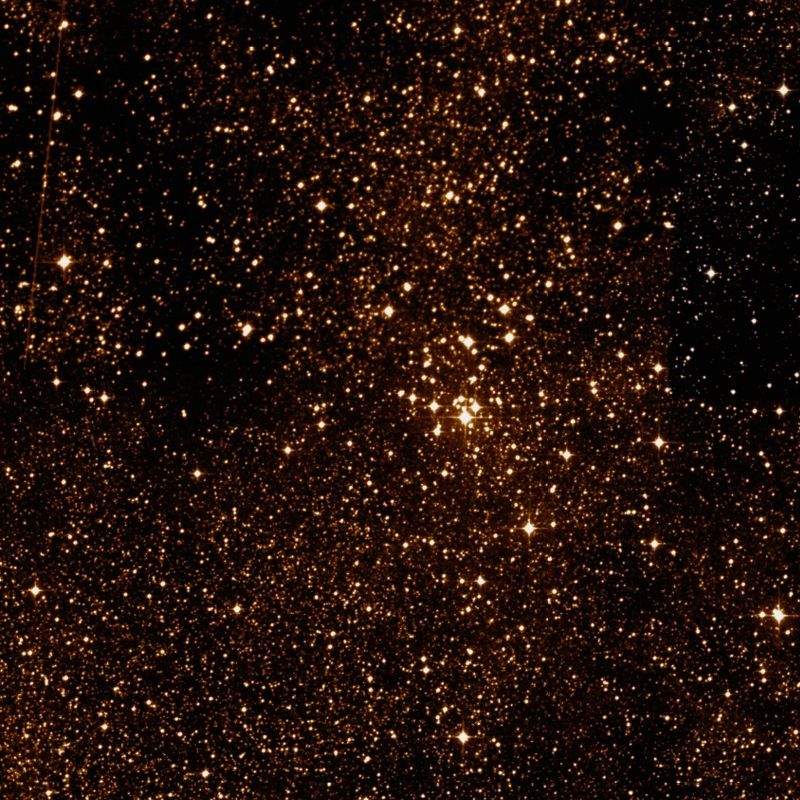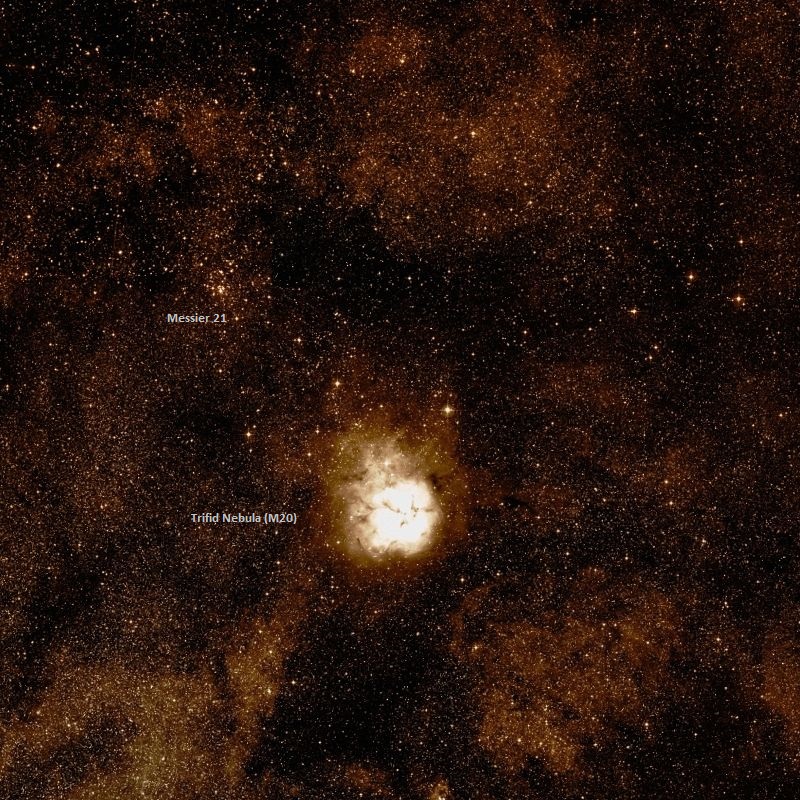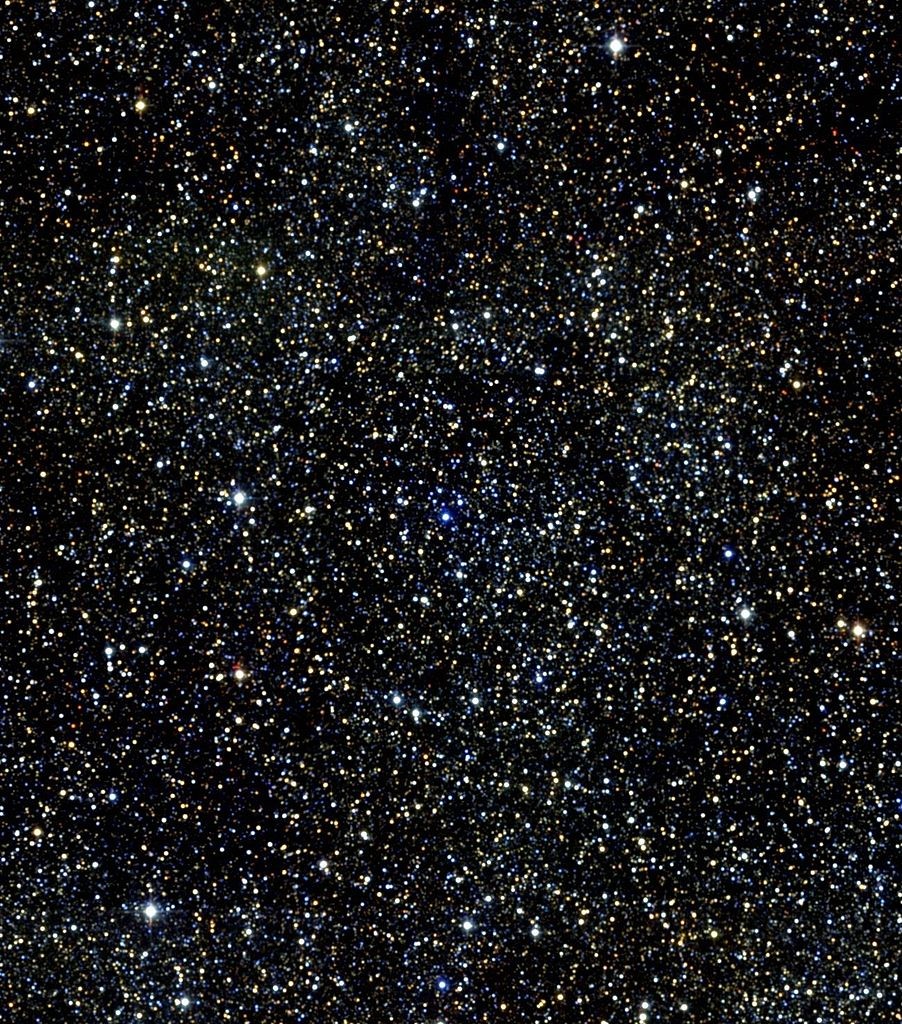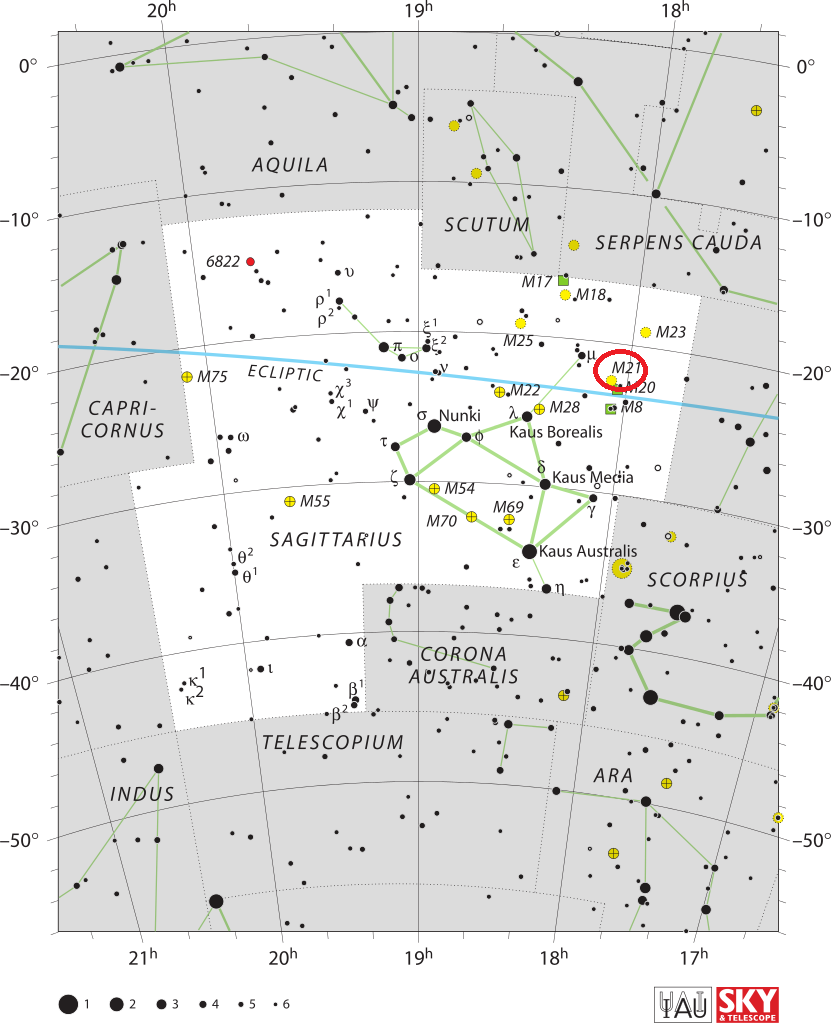Messier 21 (M21) is an open cluster located in the southern constellation Sagittarius. It has an apparent magnitude of 6.5. The cluster lies at an approximate distance of 4,250 light years from Earth. Its designation in the New General Catalogue is NGC 6531.
M21 consists mainly of small, faint stars, but is also home to a few blue giants. The cluster contains about 57 confirmed members, but is pretty densely packed. It is classified as of Trumpler class I 3 r, which means that is a detached cluster with strong central concentration (I), consists of both bright and faint stars (3), and contains more than 100 stars (r).
The stars of M21 are believed to be members of the Sagittarius OB1 Association, a group of massive O and B-type stars that share a common motion, age and origin. The eight of the 10 brightest stars in the cluster are spectroscopic binaries with periods shorter than 6 days.
Messier 21 is only 4.6 million years old, which makes it relatively young for an open star cluster. It is only 10 percent of the age of Messier 45, the famous Pleiades cluster in Taurus, and 1 percent the age of the Sun.

The cluster contains about 35 stars with a visual magnitude between 8 and 12. Many of these stars can easily be seen in a small telescope. 6-inch or larger telescopes will show many more stars tightly packed within an area 13 arc minutes in apparent size.
Messier 21 lies just beyond naked eye visibility, but can easily be found even in the smallest binoculars. It is located 2.5 degrees northwest of Messier 8 (the Lagoon Nebula) and only 0.75 degrees to the northeast of Messier 20 (the Trifid Nebula). The cluster can be found using the Teapot asterism, formed by the brightest stars in Sagittarius, to first find either of the two famous nebulae and then use them to locate M21.
The best time of year to observe M21 is in the months of June, July and August.

The open cluster was discovered by Charles Messier himself on June 5, 1764. He described the object as a “star cluster, near the preceding [Messier 20]: The nearest neighboring known star to these two clusters is 11 Sagittarii, 7 mag, according to Flamsteed. The stars of both these clusters are of 8-9 magnitude, enveloped in nebulosity.”
Admiral William Henry Smyth observed M21 in July 1835 and noted the following:
A coarse cluster of telescopic stars, in a rich gathering galaxy region, near the upper part of the Archer‘s bow; and about the middle is the conspicuous pair above registered, – A being 9, yellowish, and B 10, ash coloured. This was discovered by Messier in 1764, who seems to have included some bright outliers in his description, and what he mentions as nebulosity, must have been the grouping of the minute stars in view. Though this was in the power of the meridian instruments, its mean apparent place was obtained by differentiation from Mu Sagittarii, the bright star about 2deg 1/4 to the north-east of it.

FACTS
| Object: Cluster |
| Type: Open |
| Designations: Messier 21, M21, NGC 6531, OCl 26.0, MWSC 2796, GC 372, C 1801-225 |
| Constellation: Sagittarius |
| Right ascension: 18h 04.6m |
| Declination: -22°30′ |
| Distance: 4,250 light years (1,400 parsecs) |
| Age: 4.6 million years |
| Number of stars: 57 |
| Apparent magnitude: +6.5 |
| Apparent dimensions: 13′ |
| Radius: 8 light years |
LOCATION
